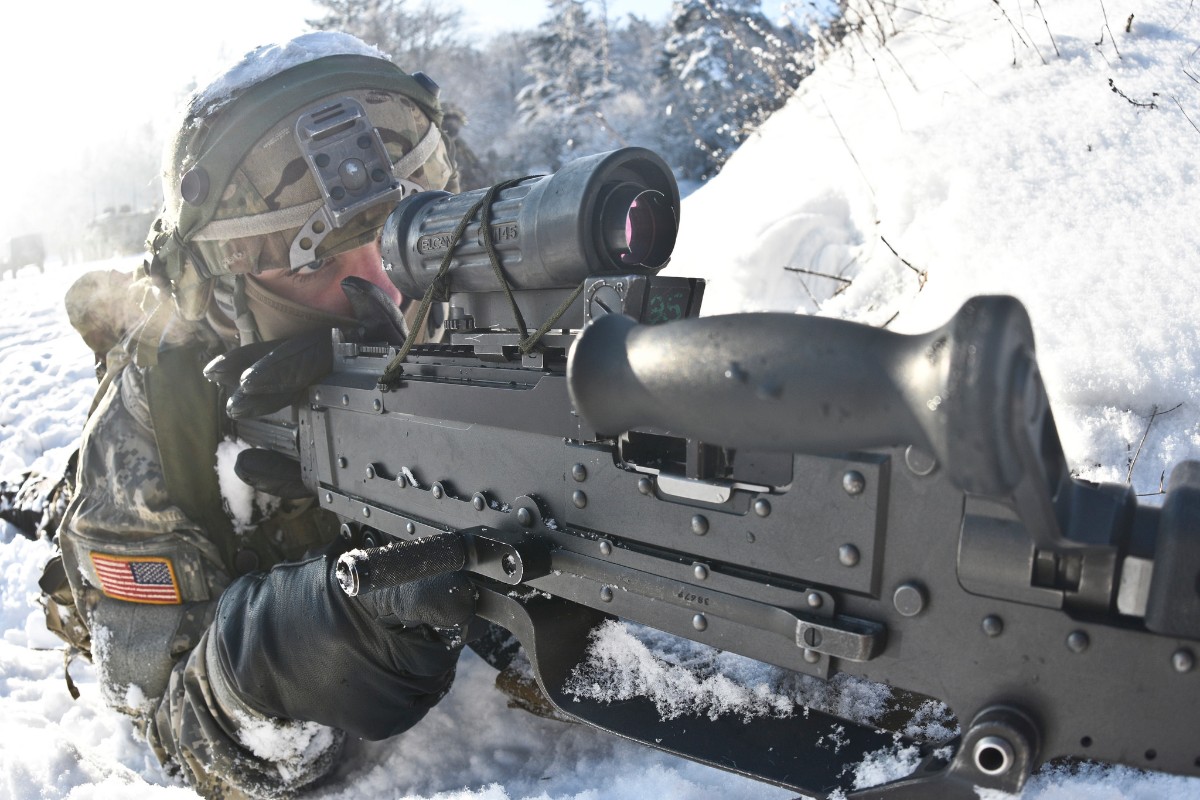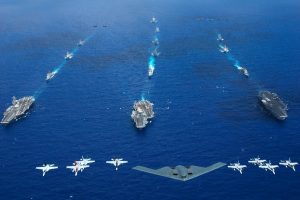 A U.S. Soldier during Allied Spirit IV. Photo by Sgt. William A. Tanner.
A U.S. Soldier during Allied Spirit IV. Photo by Sgt. William A. Tanner.
Realistically Confronting Near-Peer Land Power
Maintaining land warfare parity with potential near-peer adversaries is vital to the national security of the United States. While the US certainly continues to maintain a qualitative edge over any of its likely adversaries in major weapon systems and operational capabilities, the gap is rapidly closing. Accordingly, the American land forces are putting a renewed emphasis on countering Russian and Chinese advances in land warfare that have granted them significant asymmetric advantages over American forces.
Unfortunately, the enemy does not intend to directly compete with American land forces on its own terms. In the words of the US Army’s Training and Doctrine Command: “While the US has been engaged in counter-insurgency operations for the last 15 years, potential adversaries have modernized and studied how we fight, and will seek to threaten our critical capabilities.” Given this, it is necessary to ensure the success of continued American technological reliance by directly addressing threats to vulnerable critical capabilities when planning for future near-peer conflicts.
The emerging Multi-Domain Battle concept is a major component of the land services’ answer to confronting next-generation warfare. The intent is to confront a near-peer enemy by relying on emerging technical and operational advances in next-generation sensor networks and intelligence platforms; networked command and control infrastructures; and increased interaction with precision fire capabilities at all echelons. Ideally, within this doctrine, American technological superiority is intended to maintain the qualitative edge and affect battlefield success against a similarly equipped and similarly oriented force.
But what if the potential enemy is not a similarly equipped, similarly oriented force, pursuing a similar strategic objective to the United States? Therein lies a major flaw of Multi-Domain Battle’s application to near-peer high-intensity warfare.
Multi-Domain Battle does not go far enough to address the main strategic objective of our likely near-peer opponents: to overcome the American military’s technological and operational superiority without ever putting itself in a vulnerable position. In a future high-intensity conflict, near-peer adversaries will attempt to limit—or even deny—superior American land capabilities, not directly compete with them on terms favorable to the US. Rather than directly confronting this threat, Multi-Domain Battle appears to increase the reliance on and integration of technology in land warfare—inevitably creating further vulnerabilities for an adversary to exploit.
The solution is not just more numerous and sophisticated military technologies, but better protected and more efficiently utilized technologies operating within a realistic, coherent strategy. This effort must begin with forcing the enemy to engage on terms favorable to American forces. This should be the priority in any near-peer land engagement. Allowing the enemy maintain the ability to counter superior American capabilities with limited exposure to their own forces only enables the opponent’s objectives.

U.S. Navy photo by Chief Photographer’s Mate Todd P. Cichonowicz
The development of Multi-Domain Battle can draw lessons from AirSea Battle doctrine’s approach to a similar asymmetric challenge: anti-access/area-denial (A2/AD) capabilities. AirSea Battle acknowledges the enemy’s ability to limit the effectiveness of superior American naval and air power through relatively low-cost, low-risk means. Rather than attempting to develop more advanced, and increasingly expensive platforms capable of overcoming enemy A2/AD systems, AirSea predicates all near-peer operations on the successful elimination of enemy A2/AD systems prior to the introduction of the more vulnerable, and certainly more expensive, American weapon platforms.
Maintaining a force capable of fighting and winning in a future conflict environment is crucial. And technological innovation should continue to drive planning and development within the American land forces. It should be clear, however, that simply increasing the force’s technological reliance and investment on capabilities meant to overwhelm the enemy cannot be the entire solution to future near-peer warfare. Planners must also directly address the threat of potential adversary’s asymmetric advantages and the strategic objectives they pursue with those means. A doctrine that ignores the strategic intent of potential adversaries—to blunt American superiority without significant exposure—is unlikely to succeed.





